Easter Island Statues Mystery
Moai and Rongorongo

Easter Island is a Chilean volcanic island located southeast of the Pacific Ocean, more than 2,000 km from the mainland. The most isolated point of the planet, Easter Island enjoys great celebrity because of the many mysteries surrounding it and its gigantic statues erected on its contour, the moai. The island is divided into several ceremonial sites, the ahu, where are grouped the last 397 moai still standing today. All in all, Easterian archaeologists counted 887 moais on Easter Island but many of them are no longer observable nowadays.
The discovery of Easter Island
Easter Island was accidentally discovered by a Dutch explorer by the name of Jakob Roggeveen in 1722 while looking for "Terra Australis", an imaginary continent invented by Greek philosopher Aristotle. Easter Island takes its name from the fact that Roggeveen set foot there on Easter day. At the time of its discovery, Easter Island was colonized by a small community of about 4,000 inhabitants. The origin of the pascuans is unknown but recent DNA analyzes suggest that it may be shipwrecked from an expedition commanded by Magellan.
Rongorongo
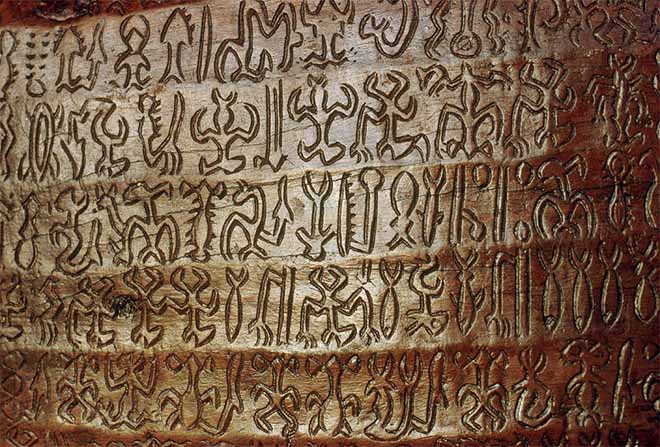
Easter Island is also famous for rongorongo, a writing or rather a system of unique signs engraved on wooden tablets and which was probably used to remember recitations to utter during ceremonies in the ahus. Nowadays, rongorongo inscriptions have still not been deciphered and there is a good chance they will never be.
Moai
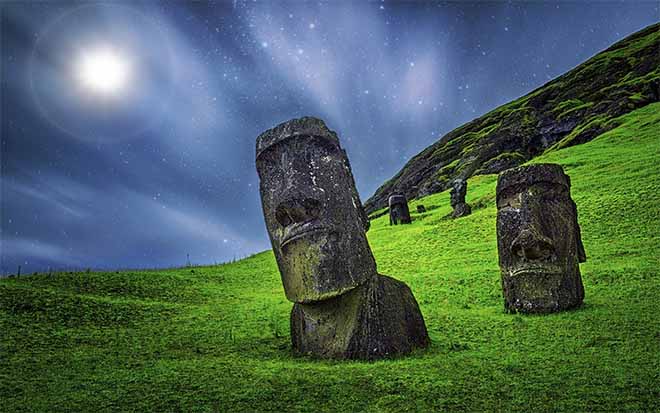
The Moai are the huge statues erected on the coast of Easter Island and are mounted and grouped on ceremonial platforms, the ahu. They represent illustrious ancestors and sovereigns and must ensure the protection of the inhabitants of the Island. The dimensions of these sculptures vary greatly, some moais are about the size of a man while others measure more than 20 meters. The Pascuans seem to have built ever larger statues over the years until they stopped their constructions, around year 1600, and began the worship of the Dolphin Man and Petroglyphs. These imposing stone statues are extremely heavy, often several tens of tons, and had to be extremely difficult to move and erect. Most of the moais on Easter Island come from the Rano Raraku quarry, a volcanic crater. There are many ahu on Easter Island, but the best known are Ahu Tongariki, Ahu Tahai and Anakena Ahu Nau Nau.
Ahu Tongariki
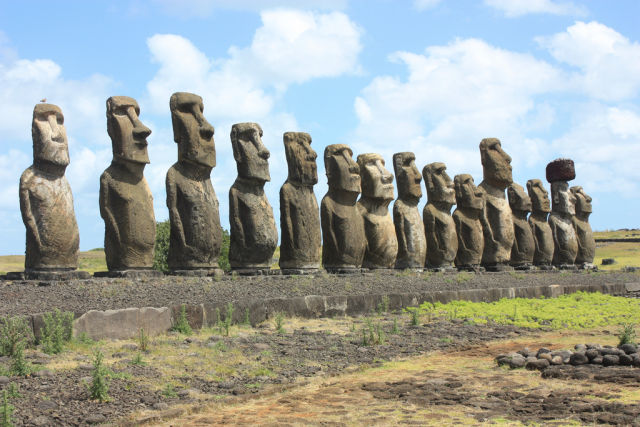
Ahu Tongariki is one of the central points of Easter Island and the largest of the Ahu. There are 15 moai mounted next to each other on a platform. It is also in Tongariki that is found the heaviest moai with a weight of 88 tons. In the 1990s, Chilean archaeologists undertook the restoration of Ahu Tongariki on behalf of Tadano and the place is now open to visitors.
Ahu Tahai
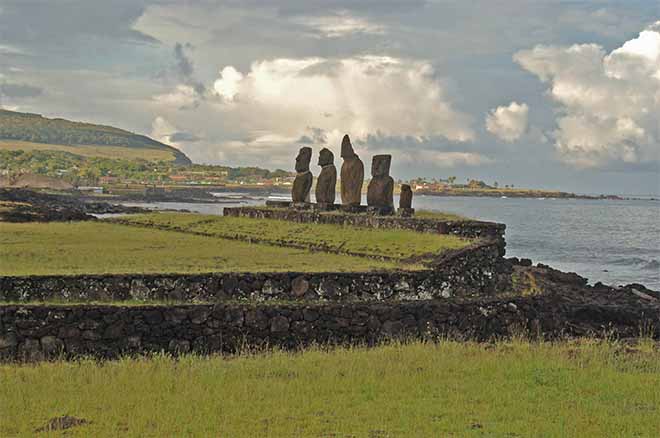
Overlooking the Pacific Ocean west of Easter Island, Ahu Tahai is greatly appreciated for its beautiful sunset. The ceremonial site of Tahai was restored in 1974 by an American archaeologist, Dr. William Mulloy, and is comprised of three main ahu: Ko Te Riku, Tahai and Vai Ure.
Ahu Nau Nau
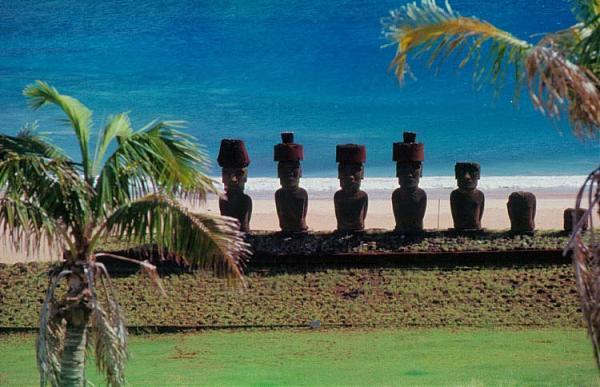
Located on the exotic beach of white sand and turquoise water of Anakena, Ahu Nau Nau is undoubtedly the most enchanting place of all Easter Island. According to oral tradition, the first settlements were established by Ariki Hotu Matu'a, first king of Easter Island, at Ahu Nau Nau.
The end of a cult
During the seventeenth century, the construction of the largest and most prestigious moai is in progress when suddenly all is abandoned and Easter Island is plunged into a period of internal war. What pushed the pascuans to abandon the worship of ancestors in favor of that of the Dolphin Man and petroglyphs? Why were moai overthrown? The current theory is that, following a depletion of once abundant resources and a rising population, social inequalities became much more pronounced and gave rise to wars, violence and destruction of 500 years old heritage.









































































































































































































































































































































